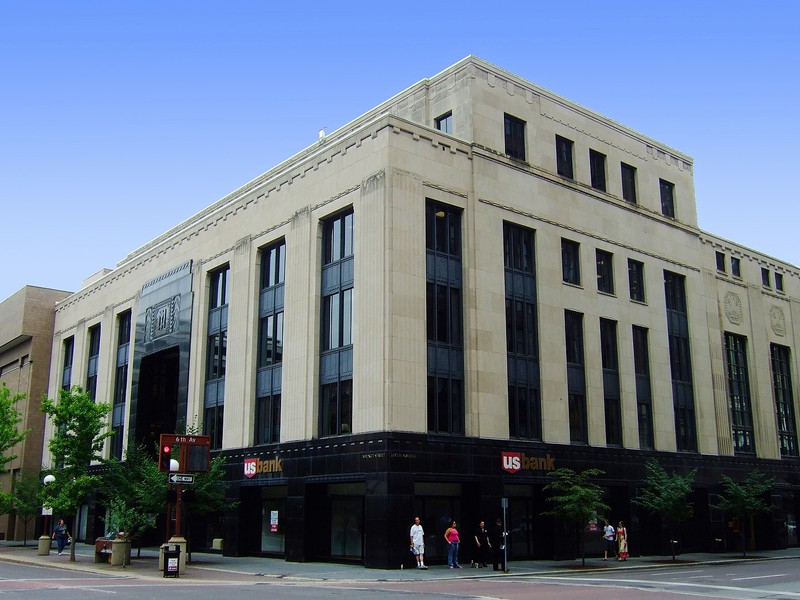Iowa-Des Moines National Bank Building
Introduction
Text-to-speech Audio
Images
Iowa-Des Moines National Bank Building

Backstory and Context
Text-to-speech Audio
The Iowa-Des Moines Bank stands as one of a small number of Art-Deco designed commercial buildings in downtown Des Moines built during the late 1920s and 1930s. The banking rooms occupied the second floor while the first floor allowed for stores, a design feature that did not come into fashion until after the Great Depression arrived.
A bank had occupied the site on the south-east corner of Walnut and Sixth since 1882 when the Des Moines National Bank was located there. The present building resulted from the merger of the Des Moines National Bank with the Iowa National Bank and the Des Moines Savings Bank and Trust Company in 1929. The 1929 merger came with a dream for a large bank that would grow substantially. The bank's original plan involved a stepped-style skyscraper rising at least twenty-one stories with shops and the bank occupying the bottom five floors and rental spaces in the remaining upper floors. However, the Great Depression's ushered in a new reality and a decision to build a much smaller building that supported only the stores and banking offices.
The decision to place the bank on the second floor, possibly the first bank in the nation to do this, proved to be a successful idea. Allowing for shops to occupy the lower level supported more significant foot traffic and, thus, more potential bank customers. The idea grew more popular after 1930, when banks endured much harder times than during the Roaring '20s, making the concept a rather innovative one when it arose before the Wall Street crash of 1929.
The second-floor innovation certainly proved valuable because the bank did not open until 1932. Although its grand plans for a skyscraper never materialized, the bank did not fold during the Great Depression. The reduced budget allowed the bank to spend money on ornate details of the Art Deco structure. The interior included plenty of polished granite, bronze and marble features, elevators, sophisticated lighting, and an elegant, decorative safe in the cellar.
The Iowa-Des Moines Bank occupied the building until 1974 when it moved to a new office space in Des Moines. Valley National Bank purchased the building in 1977 and renovated and updated the structure before moving into the building in 1979. Today, the building functions as the main branch for US Bank in Des Moines.
Sources
Klinsensmith, Samuel J. "Nomination Form: Iowa-Des Moines National Bank Building." National Register of Historic Places. nps.gov. July 10, 1979. https://npgallery.nps.gov/AssetDetail/NRIS/79000924.
Pridmore, Jay. Des Moines Architecture & Design. Charleston, SC: The History Press, 2015.
By James Steakley - Own work, CC BY-SA 3.0, https://commons.wikimedia.org/w/index.php?curid=7167128
